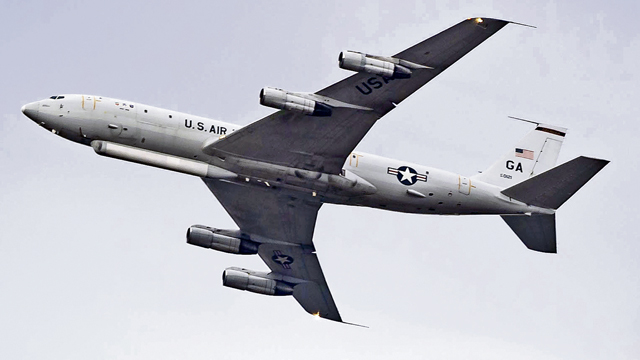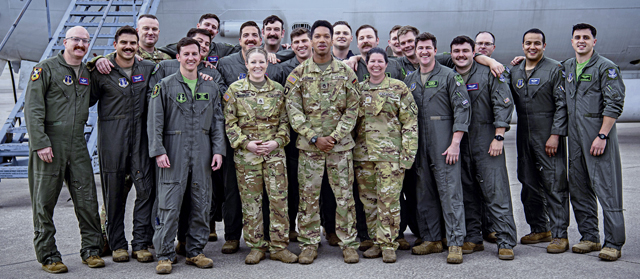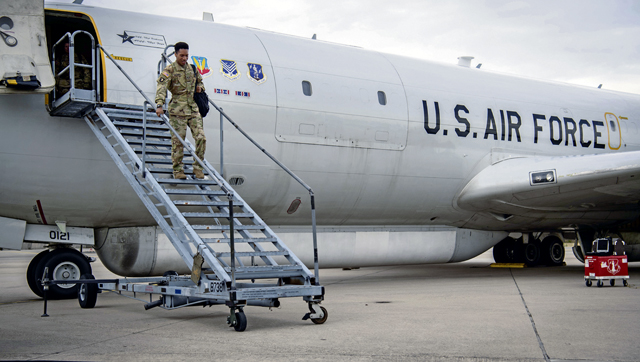
The last three U.S. Army E-8C Joint Surveillance Target Attack Radar System aircrew members participated in a final flight with the U.S. Air Force at Ramstein Air Base, June 22.
The JSTARS, which is deployed to Ramstein Air Base from the Georgia Air National Guard’s 116th Air Control Wing at Robins Air Force Base, Georgia, is an airborne battle management, command and control, intelligence, surveillance and reconnaissance platform. JSTARS are operated by Guardsmen from the 116 ACW, active duty Airmen from the 461 ACW, and the U.S. Army’s 138th Military Intelligence Company.
Since 1994, Soldiers have worked alongside Airmen to provide surveillance and aerial situational awareness to theater commanders via the JSTARS for application in air and ground operations.

“The Army’s key component on the aircraft is to liaise with the ground force commander and the Air Force,” said U.S. Army Maj. Kattie Neujahr, 138th MIC JSTARS deputy mission crew commander. “Our job is to ensure that the ground forces’ priority intelligence requirements are met. This wouldn’t be possible without the work of our joint mission crews.”
During the 28 years that joint aircrews were manning the JSTARS, Army and Air Force service members have integrated and shared knowledge to successfully complete many strategic operations.
“Our Airmen bring that air-focused perspective and the Soldiers provide that ground perspective,” Neujahr said. “It gives both services a better understanding of a complex battlefield.”

The men and women of the JSTARS team have been instrumental to overseas contingency operations, flying more than 85,000 combat hours in support of Operations Enduring Freedom, New Dawn, Odyssey Dawn and Unified Protector.
Since the attacks on 9/11, the JSTARS have been deployed everyday, making it the longest deployment in history of the Air Force.
The Army detachment is closing its door as the Air Force continues to retire the aging JSTARS fleet, making way for Robins to transition to four new missions.

Lt. Col. Christopher Luczun, 10th Expeditionary Air Command and Control Squadron detachment commander, explained that the JSTARS platform is phasing out while the capability is moving to a system.
The divestment is a result of an ongoing effort to modernize the Air Force’s command and control capabilities. The aging JSTARS fleet is experiencing declining aircraft availability and rising modernization costs, making it cost-prohibitive to sustain. It also lacks relevancy and survivability in the future operational environment.
To date, the 116 ACW has retired 2 of the 16 operational aircraft with plans to retire the remaining 14 by 2024.


